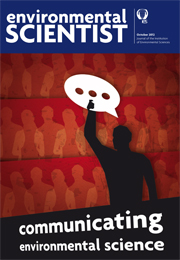The general public needs science and innovation to survive, or at least maintain the standards of living it is accustomed to, whilst scientists need public support and trust in order to continue their work. This issue provides a very broad introduction to science communication and engagement. It interrogates the various attempts to strengthen this bond between specialists and non-specialists using science communication. It explores how communication can be achieved through many media. Using art to communicate air-quality science shows us the power of that medium to portray basic concepts or allow the impacts of otherwise invisible pollutants to hit home in a very intimate and personal way.




